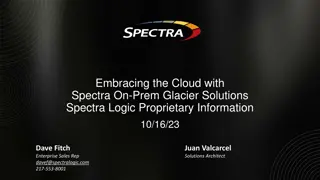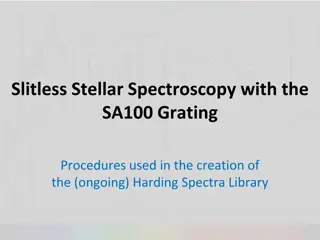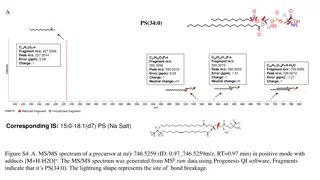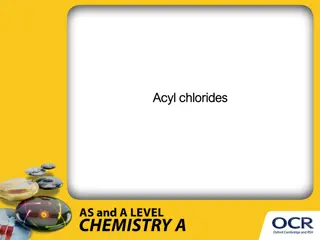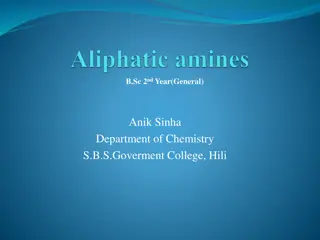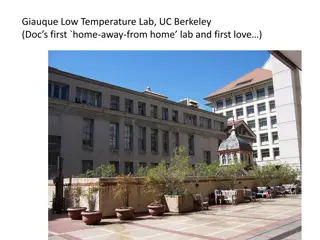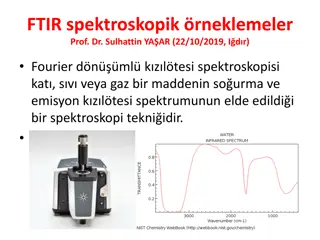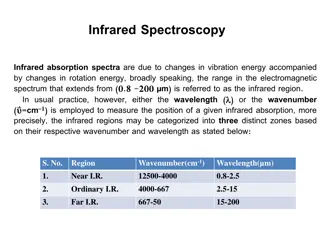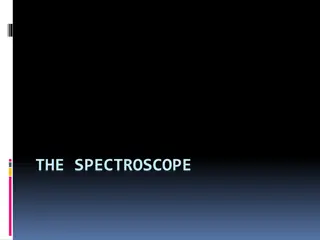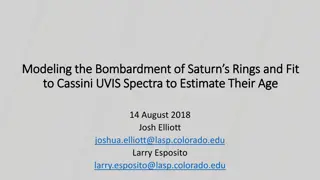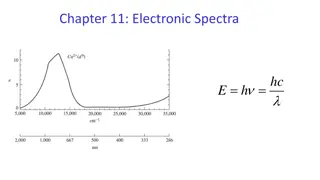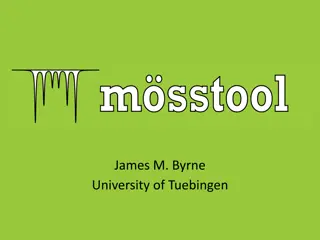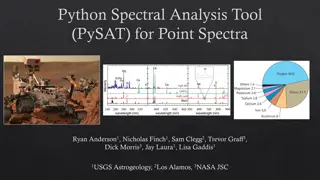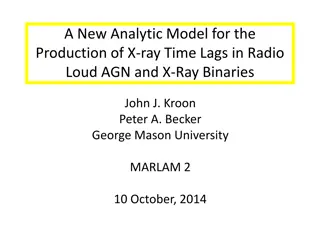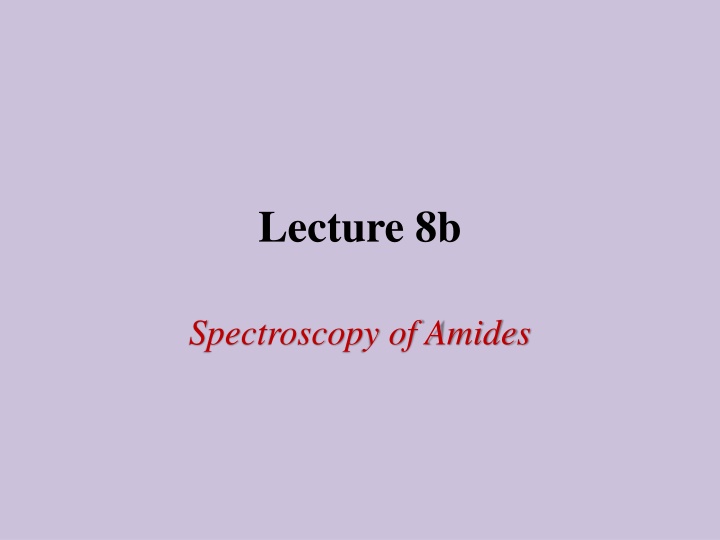
Spectroscopy of Amides: IR and NMR Analysis
Explore the spectroscopic analysis of amides, focusing on infrared (IR) and nuclear magnetic resonance (NMR) spectroscopy. Understand the variations in carbonyl stretching frequencies, signals in 1H and 13C-NMR spectra, rotational barriers, and amide conformers. Gain insights into how different functional groups affect spectral data interpretation.
Uploaded on | 0 Views
Download Presentation

Please find below an Image/Link to download the presentation.
The content on the website is provided AS IS for your information and personal use only. It may not be sold, licensed, or shared on other websites without obtaining consent from the author. If you encounter any issues during the download, it is possible that the publisher has removed the file from their server.
You are allowed to download the files provided on this website for personal or commercial use, subject to the condition that they are used lawfully. All files are the property of their respective owners.
The content on the website is provided AS IS for your information and personal use only. It may not be sold, licensed, or shared on other websites without obtaining consent from the author.
E N D
Presentation Transcript
Lecture 8b Spectroscopy of Amides
Infrared Spectroscopy The location of the carbonyl stretching frequency varies significantly between the different carbonyl functionalities (CH3COX, HF/6-31**): Carbonyl compound Reactivity (C=O) CH3COBr extremely high 1817 cm-1 CH3COCl extremely high 1806 cm-1 (CH3CO)2O very high 1761 cm-1 CH3COOCH3 medium 1748 cm-1 CH3COOH low 1715 cm-1 CH3CON(CH3)2 extremely low 1662 cm-1 d(C=O)X 116.3 pm 116.7 pm 117.8 pm 118.8 pm 118.7 pm 120.2 pm Bond order pKaof acid 1.939 1.937 1.848 1.835 1.870 1.718 (-9) (-7) ~3-5 16-19 (ROH) 16 (H2O) 38 (NH3) (HBr) (HCl) (RCOOH) The table shows that a shorter the C=O bond is associated with a higher carbonyl stretching frequency: Acyl chlorides are on the high end of this range because of the inductive effect of the chlorine atom (B.O. for (C=O)=1.937 (CH3COCl)). Amides are found on the low end of the range because of the strong resonance effect (B.O. for (C=O)=1.718 (CH3CON(CH3)2)). The C-N bond is usually significantly shorter in amide compared to amines due to the partial double bond ((B.O. for (C-N)=1.14). O O R N R N
NMR Spectroscopy I 1H and 13C-NMR Spectra How many signals would we expect to see on the 1H-NMR and the 13C-NMR spectrum? The additional signals are observed due to the lower apparent symmetry i.e., two signals for the methyl groups in the 1H-NMR and the 13C-NMR spectrum. The spectra are temperature and solvent dependent. Compound Rotational Barrier N,N-Dimethylformamide 86 kJ/mol (D2O) 69 kJ/mol (D2O) 69 kJ/mol (D2O) 66 kJ/mol (CDCl3) N,N-Dimethylacetamide N,N-Dimethylpropionamide N,N-Dimethylbenzamide
NMR Spectroscopy II T=370 K O DEET H3C N If a free rotation about the O=C-N bond was observed, there should be three signals in the range below 4.0 ppm. Three signals are observed at high temperatures, but five signals at room temperature and below because of the slow rotation which makes the two ethyl groups non-equivalent. T=320 K T=300 K T=280 K
Example N,N-Diethylformamide What would be expect to observe in the 1H-NMR spectrum? How can one rationalize the quintet at =3.3 ppm and the quartet at =1.1 ppm? Two overlapping quartets or triplets, respectively
Amide Conformers I Secondary amides are found as trans- or/and cis-conformers (rotamers) For bulky R -groups (i.e., tert.-Bu, Ph, o-Tol, etc.), the cis rotamer is dominant in solution (CDCl3) For R -groups that contain atoms like nitrogen (i.e., lidocaine) or oxygen in a reasonable distance, the trans rotamer is favored due to the possibility of intramolecular hydrogen bonding A lower (NH) stretching mode ( <3300 cm-1) and increase in the (NH) mode ( >1500 cm-1) An increased chemical shift of the amide proton ( =9.5-11 ppm) At higher concentrations, aggregates of the trans rotamer are found in solution.
Amide Conformers II Example 1: N-Ethylformamide (0.5 mL : 1.5 mL CDCl3) trans trans trans cis cis cis Two sets of signals due to the cis rotamer (small signals) and trans rotamer (large signals) conformers in the solution The trans conformer clearly being favored here (88:12)
Amide Conformers III Example 1: N-Ethylacetamide (0.5 mL : 1.5 mL CDCl3) For R-groups that are larger than H, the trans rotamer is usually highly favored


